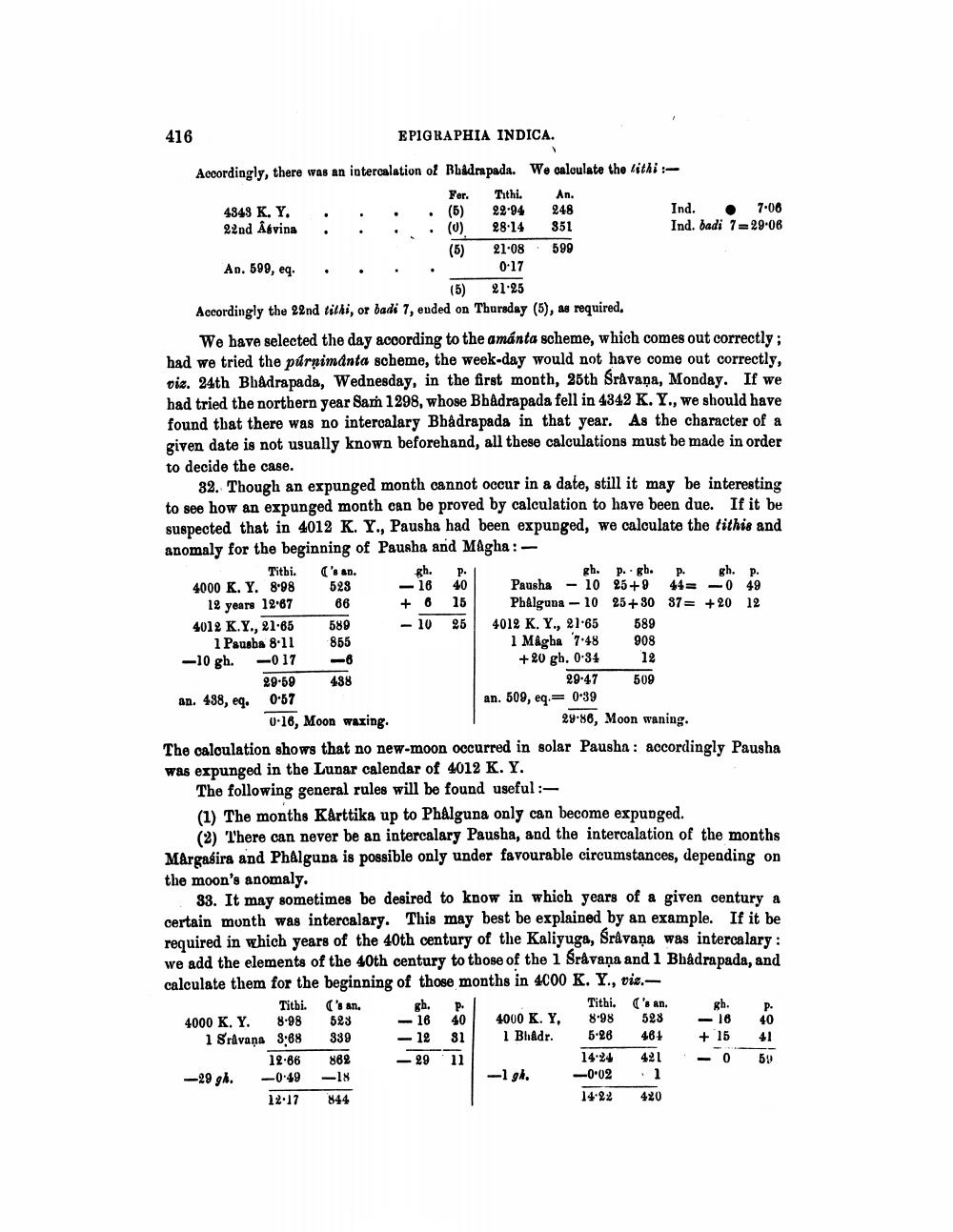________________
416
EPIGRAPHIA INDICA.
Accordingly, there was an intercalation of Bhadrapada. We caloulate the lithi :
Fer. Tithi. An. 4848 K. Y. . . . . (5) 22-94 248
Ind.
7.06 22nd Afvina . · (0) 28:14 351
Ind. badi 7 = 29-08 (5) 21.08599 Ap. 599, eq. . . . . 0:17
(5) 21.25 Accordingly the 22nd tilki, or badi 7, ended on Thursday (5), as required.
We have selected the day according to the amánta scheme, which comes out correctly; had we tried the purnimanta scheme, the week-day would not have come out correctly, via. 24th Bhadrapada, Wednesday, in the first month, 25th Srávaņa, Monday. If we had tried the northern year Sam 1298, whose Bhadrapada fell in 4342 K. Y., we should have found that there was no intercalary Bhadrapada in that year. As the character of a given date is not usually known beforehand, all these calculations must be made in order to decide the case.
32. Though an expunged month cannot occur in a date, still it may be interesting to see how an expunged month can be proved by calculation to have been due. If it be suspected that in 4012 K. Y., Pausha had been expunged, we calculate the tithis and anomaly for the beginning of Pausha and Magha : -
Titbi. (san. 4000 K. Y. 8-98 528 - 16 40 Pausha - 10 25+9 44= - 49
12 years 12.87 66 + 6 15 Phalguna - 10 25+ 30 37= +20 12 4012 K.Y., 21.85 589 10 25 4012 K. Y., 21.65 589 1 Pausba 8.11 855
1 Mágba 7.48 908 -20 gh. -017
+ 20 gb. 0-34 12 29-59 438
29-47 509 an. 438, eq. 0-57
an. 509, eq.= 0.39 0.16, Moon waxing.
29-86, Moon waning. The calculation shows that no new-moon occurred in solar Pausha : accordingly Pausha was expunged in the Lunar calendar of 4012 K. Y.
The following general rules will be found useful :(1) The months Karttika up to Phálguna only can become expunged.
(2) There can never be an intercalary Pausha, and the intercalation of the months Margasira and Phalguna is possible only under favourable circumstances, depending on the moon's anomaly.
33. It may sometimes be desired to know in which years of a given century a certain month was intercalary. This may best be explained by an example. If it be required in which years of the 40th century of the Kaliyuga, Sravana was intercalary: we add the elements of the 40th century to those of the 1 Sravana and 1 Bhadrapada, and calculate them for the beginning of those months in 4000 K. Y., vie.Titbi. ('san.
Tithi. ('san. 4000 K. Y. 8-98 523
4000 K. Y, 8-98 528 -16 40 1 Sravans 3:68 339 - 12 31 Bhadr. 5.28 48+ + 15 12.86 862 - 29
14.24 421 - 0 -29 gk. -0.49 -18
- gh. -0.021 12.17 844
1422 420
6
40




